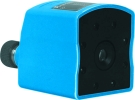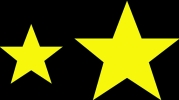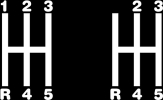

Wenglor has now introduced what is believed to be the world's smallest colour vision sensor. Available from ASSTech Process Electronics & Instrumentation, the BS40 is capable of fast and reliable colour image processing, with a sharp image assured by the auto-focus feature.
Camera, optics, analysis module and illumination are all integrated into a compact housing (40 x 45 x 45,5 mm) for fast, easy installation. Additional external lamps are also available for optimised illumination. The vision sensor's auto-focus function is a major advantage to automatically, quickly and conveniently ensure a sharp image, even if the sensor has been installed in a difficult to access location.
IP67 protection provides insensitivity to dust and water, making the BS40 suitable for use in harsh industrial environments. This is an important benefit when cleaning production equipment, as the sensor does not require any additional protection.
Many functions
The vision sensor provides numerous functions which can be flexibly linked to one another. The unit carries out a great variety of image processing tasks with its various operating modes including checking for the presence of objects, pixel comparison, shape analysis and reference image comparison. Due to its CMOS colour chip, the sensor also detects minimal colour deviations and can, for example, sort objects according to colour. A variable working distance capability ensures flexibility. The vision sensor provides high performance even at a distance of only 20 mm from the subject.
The BS40 is also well equipped for monitoring tasks involving large surface areas; at a distance of 100 mm from the subject, the sensor is capable of monitoring a surface area of 60 x 46 mm. As the vision sensor can detect objects down to a size of just 50 mm, even the smallest deviations are registered. The unit is equipped with two switching outputs, to allow for up to three object results to be linked to each other. Image recording can be synchronised to the production sequence by means of a trigger input.
Objects are recognised regardless of position and skew. The working range can be individually defined as well, and interfering image areas can be suppressed. The Wenglor vision sensor can therefore be used with any background. Sorting, size detection and go/no-go identification are rendered simple and reliable.
Applications
The device is suitable for checking for the presence of objects in many applications. It can be used to determine whether or not a certain object is present within the monitored image area. The function adds up the number of pixels calculated by a reference object, to establish a threshold value. If the sum of the pixels of a subsequently inspected object exceeds the threshold value, the object is registered as present, and vice versa.
Washers which are damaged, not present at all, or too small, are detected by the sensor and sorted. An application example is in the woodworking industry. An acceptable wood sample is used as a norm (eg, maximum permissible number of knotholes). If there are more knotholes within the sensor's field of vision during testing than were previously registered during teach-in, the vision sensor generates a corresponding signal. The vision sensor can also be used to detect imperfections in goods sold by the metre (eg, lengths of fabric).
Shape analysis is independent of position and skew. Three object attributes, namely surface area, circumference and shape, can be linked to each other.
A given shape is taught into the vision sensor, eg, a special key profile (see Figure 1). The sensor calculates the surface area and the circumference of the shape, and places these values in relationship to one another. If, for example, certain notches are missing from the key profile during subsequent inspection, the surface-area-to-circumference ratio of the object is changed and the object is recognised as false.

The pixel comparison function adds up the pixels of a reference object and establishes upper and lower limits for the resulting total number. If the sum of the pixels of a subsequently inspected object does not lie within these limits, the output is switched.
The vision sensor stores the number of pixels calculated during teach-in (see Figure 2). The sensor determines whether or not the subsequent test object is damaged, deformed, contaminated, too large or too small. The tolerance for the total number of pixels can be individually adjusted. This function is also capable of determining whether or not several or too many objects are present. For example, inkjet-printing quality can be monitored in this way. Pixel comparison can be used to determine when the ink cartridge is empty.
For reference image comparison, the object must demonstrate the same position and skew characteristics as the previously taught-in object. If this is the case, the vision sensor recognises the part as good.

The printed gear shifting pattern at the left is taught-in to the vision sensor (see Figure 3). All recognisable objects, in this case the numbers 1 through 5, the letter R and the shifting pattern, are enclosed in an envelope. If a number is missing, or if the imprint is askew or damaged, the sensor indicates an error.

Easy setting up
Sensor set-up is really very simple. The user is able to pinpoint the sensor's field of vision quickly and easily during set-up with the help of a live image. The BS40 vision sensor can be quickly and easily configured for individual applications on a PC or a laptop using Wenglor's user-friendly software. In addition to the device configuration, diagnosis images are also transmitted via the USB port, which can be used for error documentation and quality assurance. The USB 2.0 port also allows for easy wiring, plugging in and unplugging with the PC switched on and high-speed data transmission.

BS40 vision sensor specifications:
* Image repeating frequency: 50 images per second.
* Switching frequency: <16 Hz.
* Resolution: 640 x 480.
* Supply voltage: 18 to 30 V.
* Working distance: >20 mm.
* Response time: >30 ms.
* Two switching outputs.
* Protection: IP67.
* Temperature range: 0 to 40°C.
* Can be configured via USB.
For more information contact Anastas Schnippenkotter, ASSTech Process Electronics & Instrumentation, 011 794 7057.

© Technews Publishing (Pty) Ltd | All Rights Reserved